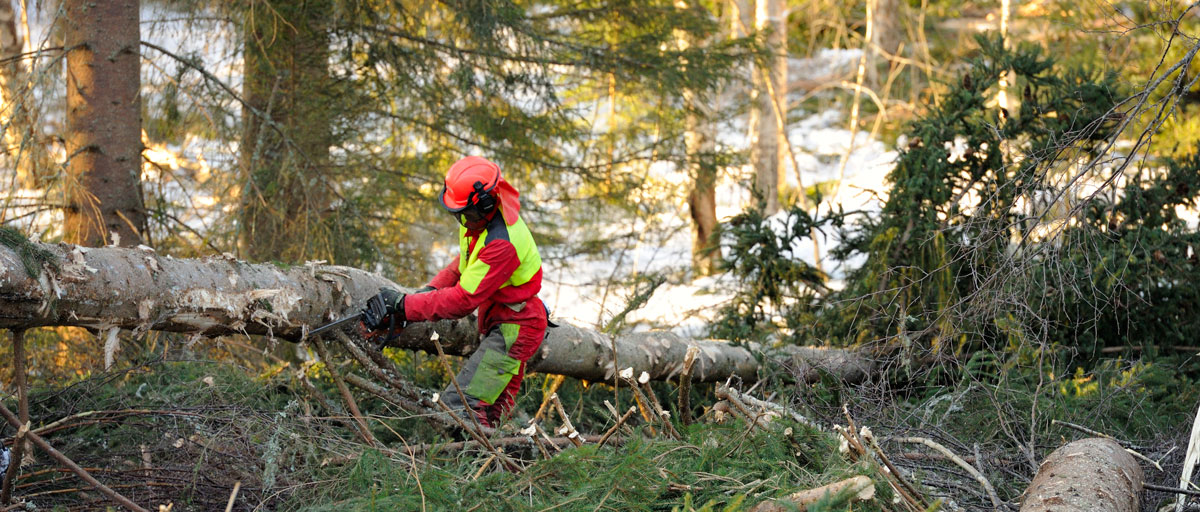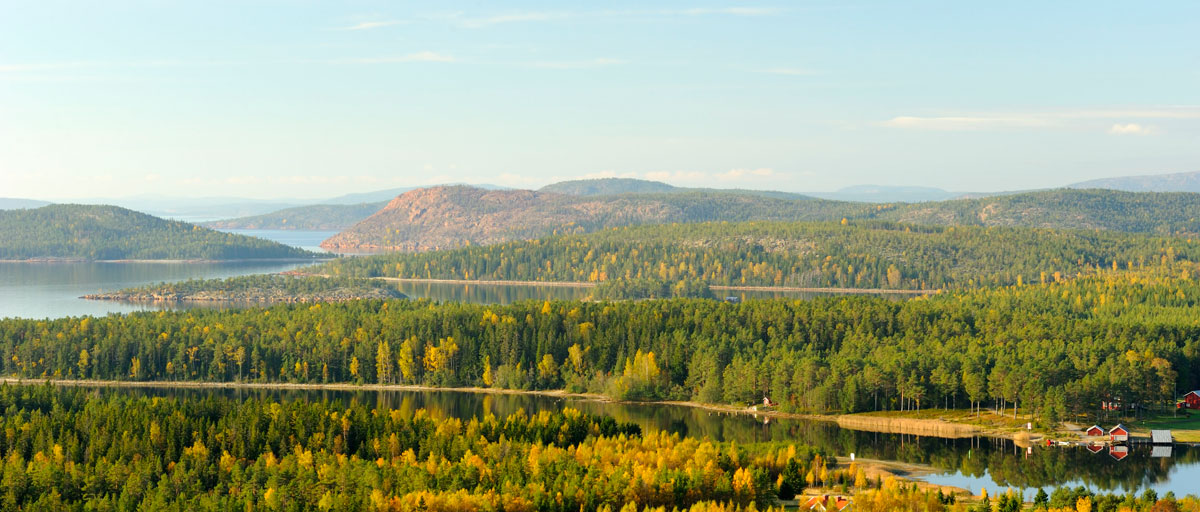
A smarter tree logging that takes into account species' need for movement within and between patches of suitable habitat can help reduce habitat fragmentation and biodiversity loss. Photo: P. Turander/Azote
Forest logging
Cut down the right tree
Smarter forest logging based on knowledge of habitat connectivity can curb biodiversity loss
- Study looks at how forest logging affects species' response to habitat dynamics
- Authors look at 20 000 patches of old pine forest in northern Sweden, which host many threatened species
- Study presents a holistic landscape-connectivity model and how the availability of a protected habitat changes when also considering habitat patches outside the reserves
They are old, but they are popular. Pine forests are hosts to a wide range of threatened forest dwelling animals, plants and fungi species in Sweden. Indeed, when it comes to forest species, you'll find a high concentration in old-growth forests. But the trees are also valuable as timber. Swedish forest products are exported at an annual value of 20 billion USD. That equals 11 percent of Sweden's total export.
So we are left with a trade-off: meeting the demands on timber while also sustaining ecosystem services that depend on the trees. Can both demands be met? Yes, if we're smart, according new research.
Connected or nowhere to go?
In a study recently published in Biological Conservation, centre researchers Arvid Bergsten and Örjan Bodin together with Frauke Ecke from the Swedish University of Agricultural Sciences have looked at how forest logging affects species' response to habitat dynamics. They found that habitat fragmentation and biodiversity loss can be reduced if logging is planned with awareness to species' need to relocate to other areas.
Request article
Bergsten and his co-authors looked at 20 000 patches of old pine forest in northern Sweden, which host many threatened species but are scattered in a landscape dominated by intensive forestry. A central concept in their research was the assessment of connectivity, i.e, the extent to which a landscape "facilitates movement within and between patches of suitable habitat."
"Connectivity enables dispersal and allows recolonization of patches after local extinction events. This is a precondition for long-term persistence of a species in a region"
Arvid Bergsten, lead author
Bergsten warns that a decreasing area of old-growth forests puts a constraint on conservation planning. Creating connected networks of protected areas has become the most commonly used and cost-effective strategy to maintain biodiversity.
However, it is not enough.
Include the unprotected areas
Bergsten and his colleagues present a more holistic landscape-connectivity model where they quantify how the availability of a protected habitat changes when we also consider habitat patches outside the reserves.
"Our analysis quantifies how habitat availability changes if we also account for forest outside a reserve network. In fact, the total habitat area increase six times, however one can expect that most patches that are not protected will be cleared within a few decades, making them a temporary habitat only," Bergsten explains.
What is needed then is a smart planning of logging and a strategic allocation of new protected areas, which in combination strengthen the habitat availability for target species groups.
"Irrespective of whether we might have over- or underestimated the contribution of unprotected habitats, our results imply that mature but unprotected habitat patches provide important ecological functions. Lack of connectivity can lead to loss of biodiversity but this can be mitigated if tree logging is done more strategically," Bergsten and his colleagues conclude.
Request article
Related article: Forestry and nature conservation can benefit from higher tree species diversity







